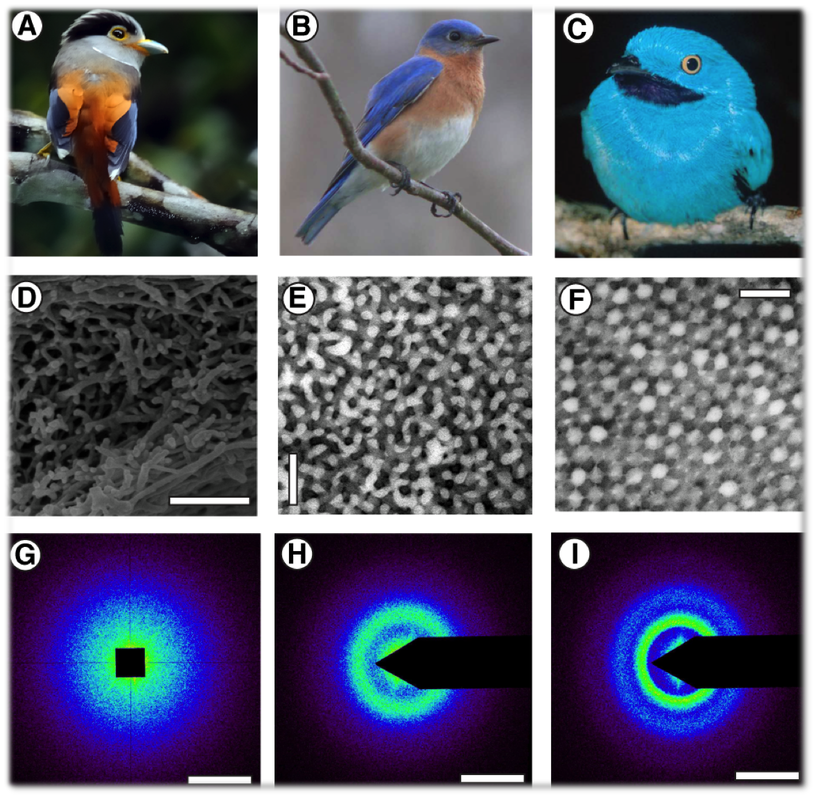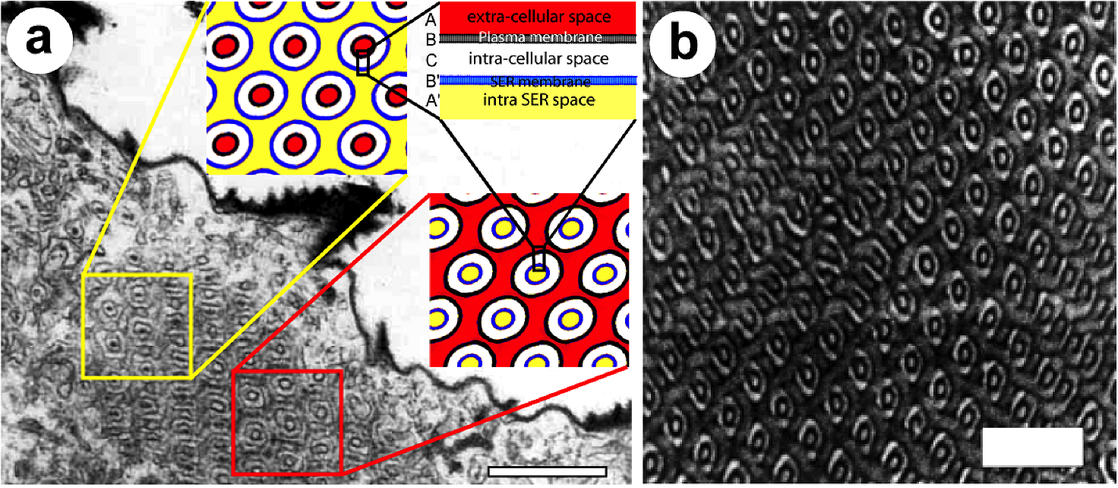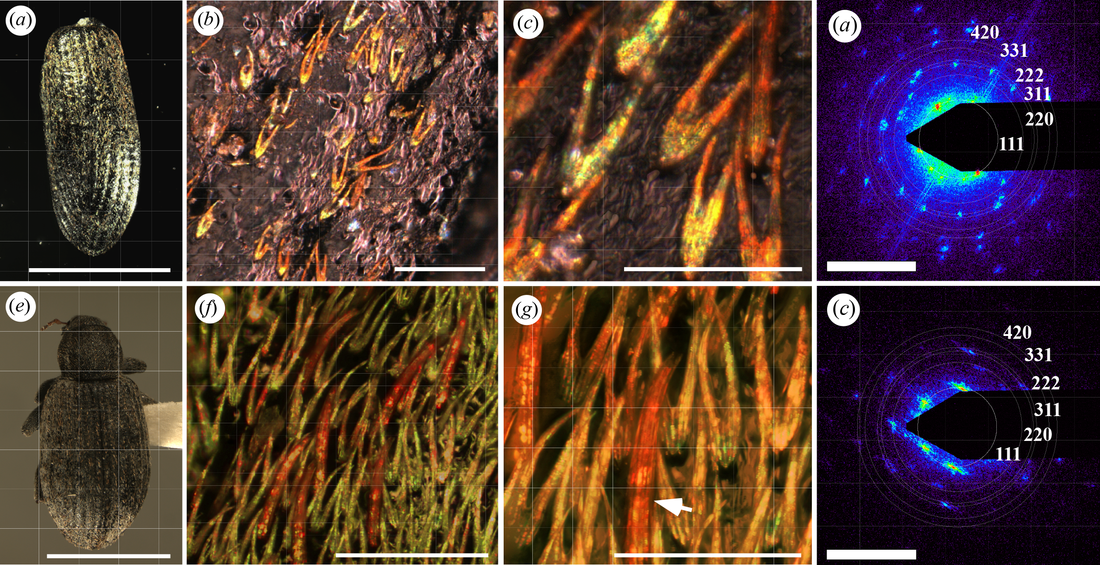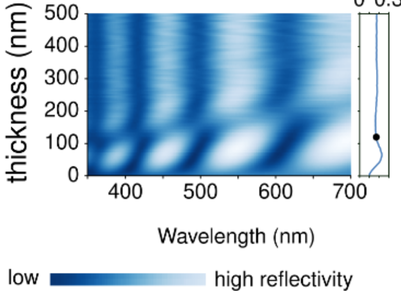OVERVIEW
Our lab specializes in the study of structural colouration in animals and plants, responsible for vivid hues such as many (ultra)violets, blues and greens in both extant and extinct organisms. Such colours are ubiquitous in nature and form an important part of the phenotype of animals, as they are often used in inter- and intra-sexual communication and camouflage. Specifically, we are interested in what Saranathan has termed “Evolutionary Photonics” – a precise, holistic understanding of the biophotonic nanostructures underlying organismal structural colouration.
We are thus broadly focused on the integration of evolutionary and developmental biology and soft matter physics to inform fundamental questions from animal signalling to the bio-inspired or biomimetic design of novel, eco-friendly, functional materials by mimicking the ‘green’ water-based intra-cellular self-assembly processes. Towards this end, we are keen on developing and applying an ‘-omics’ approach to unravel the precise developmental basis of animal structural colouration in non-model organisms.
We are also very much interested in comparative, macro-evolutionary questions on the evolution of iridescent and non-iridescent structural colouration in nature, questions that are well-poised to be presently addressed given the recent phylo-genomics driven progress in systematics. We are also focused on establishing field research on structurally coloured bird species in Singapore and South East Asia with local and regional collaborators.
We have pioneered the use of synchrotron Small Angle X-ray Scattering (SAXS) as a precise, high-throughput tool for the structural characterisation of biophotonic nanostructures. We also use electron microscopy (both scanning and transmission), focused ion-beam milling and are keen on applying a whole slew of state-of-the-art materials characterization techniques including cryo-EM, Raman spectroscopy, microspectrophotometry, fibre diffraction, X-ray reflectometry as well as theoretical optical modelling approaches for the structural and functional characterisation of biophotonic materials.
We are thus broadly focused on the integration of evolutionary and developmental biology and soft matter physics to inform fundamental questions from animal signalling to the bio-inspired or biomimetic design of novel, eco-friendly, functional materials by mimicking the ‘green’ water-based intra-cellular self-assembly processes. Towards this end, we are keen on developing and applying an ‘-omics’ approach to unravel the precise developmental basis of animal structural colouration in non-model organisms.
We are also very much interested in comparative, macro-evolutionary questions on the evolution of iridescent and non-iridescent structural colouration in nature, questions that are well-poised to be presently addressed given the recent phylo-genomics driven progress in systematics. We are also focused on establishing field research on structurally coloured bird species in Singapore and South East Asia with local and regional collaborators.
We have pioneered the use of synchrotron Small Angle X-ray Scattering (SAXS) as a precise, high-throughput tool for the structural characterisation of biophotonic nanostructures. We also use electron microscopy (both scanning and transmission), focused ion-beam milling and are keen on applying a whole slew of state-of-the-art materials characterization techniques including cryo-EM, Raman spectroscopy, microspectrophotometry, fibre diffraction, X-ray reflectometry as well as theoretical optical modelling approaches for the structural and functional characterisation of biophotonic materials.
Structure and Function of Biophotonic Nanostructures
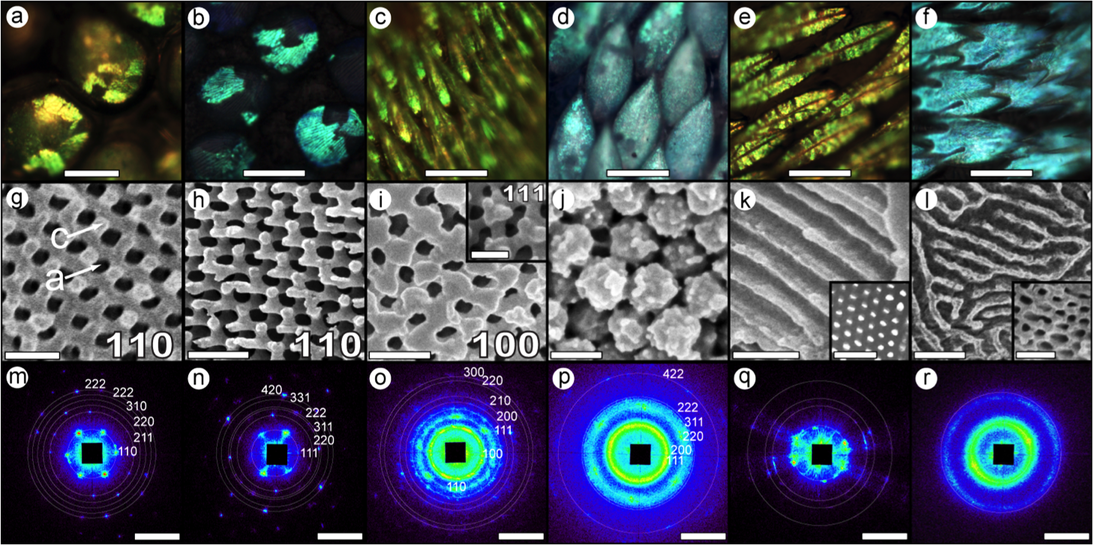 3D photonic nanostructures in terrestrial arthropods span the lyotropic/amphiphilic phase space!
3D photonic nanostructures in terrestrial arthropods span the lyotropic/amphiphilic phase space!
We have been at the forefront of accurately (both structurally and optically) characterizing the diversity of biophotonic nanostructures in birds and terrestrial arthropods, but from a unique comparative perspective. By contrast to most studies on animal structural coloration that look at a handful of species at most, we seek to understand their function and evolution from a broad macro-evolutionary perspective. We also utilize the latest techniques like SAXS/USAXS that help us appreciate the often complex three-dimensional nature of these biophotonic nanostructures. Our approach has led us to the startling insight that these biophotonic nanostructures are self-assembled and rival the morphologies seen in synthetic polymeric materials, including such elusive and esoteric phases like the single gyroid.
Evolution and development of Biophotonic Nanostructures
Structural colours have evolved over millions of years of selection for a consistent optical function. Having unlocked the nanostructural secrets of avian and arthropod biophotonic nanostructures, we are interested now in understanding how organisms have evolved to facilely develop these nanostructures via intra-cellular self-assembly at the large optical length scales, both from a micro- and macro-evolutionary perspectives, informed also by the fossil record.
Biomimetics and Bioinspiration of Designer Nano-architectures
|
Currently, the fabrication of a choice, defect-free, large-area photonic crystals via synthetic amphiphile or lyotropic self-assembly is challenging. Nature has pre-empted engineering and has in many instances arrived at optimal solutions to problems in sensing and communication, using (self-assembled) biophotonic nanostructures. We are interested in the biomimetic and bioinspired design and synthesis of novel photonic architectures for multi-functional applications |
Software
|
bbandAgmodel
This repository contains the software implementation for Prakash et al. 2021 Cell Reports "Antennapedia regulates metallic silver wing scale development and cell shape in Bicyclus Anynana butterflies." This includes a set of code written in SCM Scheme, awk and shell (Bash) and using FreeSnell to theoretically model the broadband (silver/gold) reflectivity of a bilaminate butterfly wing scale scale with 3-layers (an air layer sandwiched between upper and lower laminae). |

